Indoor decorative thuja is a neat bushes of various shapes. It is called the tree of life for its ability to clean the air and energy of the room in which it is located.
Few people know that the plant has no indoor species. What flower growers call decorative thuja is not really a thuja. Ploskovetochnik Vostochny is the only representative of the genus Ploskovetochnik (Platikladus, Biota) of the Cypress family. In some sources, it can be found as an Eastern thuja. This name is associated with the former position of the plant in a systematic classification.
Florists love Ploskovetochnik for exotic appearance and unpretentiousness. Caring for a room thuja does not require special skills and at home this plant is very well established. And the variety of crown formation possibilities gives the flower an additional charm.
Content
Characteristics of indoor thuja and species diversity
The root system of the thuja is of a superficial type, with the roots developing rapidly. The trunk is erect. The surface is covered with a thin bark of light shades of brown. On the trunk are straight, upward branches. The bark of branches is slightly darker than the stem bark.
The shoots are flattened. They form a system of plates located radially to the main trunk. The color of the shoots is light brown.
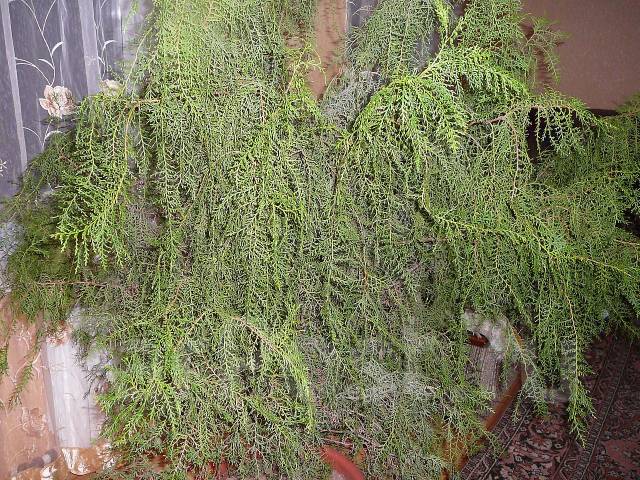
Unlike many other conifers, the leaves are not represented by needles, but by flat scales. They grow very densely, tightly adjacent to each other. The color of the leaves is green. Hue depends on the variety. There are no resin glands on the needles.
Distinguish between male and female cones. Male microstrobils (cones) have an oblong shape and are located at the tips of the shoots. Female microstrobils are placed on the tips of individual branches and are represented by a spherical shape.
Oriental thuja is represented by the following varieties:
- Aurea. Slow-growing shade-loving trees.
- Aurea Nano. Dwarf thuja.
- Cupressoidess. Representatives of the variety are similar to cypresses.
- Magnifica. Dense branchy thuja.
In indoor floriculture, only the Aurea Nano hybrid is widely used.
Secrets and difficulties of caring for thuja at home
Caring for a thuja is easy and not burdensome. The most important point in growing is properly organized watering.
Soil and planting pot
The soil for a young and adult plant is different in composition. The substrate for young thuja must contain the following components:
- sand - 1/7 part;
- coniferous land - 2/7 parts;
- sheet land - 4/7 parts.
For adult plants use the following composition:
- peat - 2/5;
- sand - 1/5;
- sheet land - 2/5.

A flower pot must meet the following requirements:
- The size. The thuja pot is selected for growth, so that it is less likely to transplant.
- Gutter. Large drainage holes must be placed at the bottom of the pot.
- Removable drip tray. Necessary to collect unused water.
Location and lighting
Thuja feels comfortable only in partial shade. Direct sunlight has a negative effect on the flower. However, it is also impossible to leave it without light. From a lack of lighting, the plant draws out stems, which spoils its decorative appearance.
The most optimal is the location on the northern windowsill or in the immediate vicinity. Eastern and western windows are too bright for this plant. Therefore, on the east or west side, the pot can only be placed in the back of the room. The south side is not suitable for growing thuja.
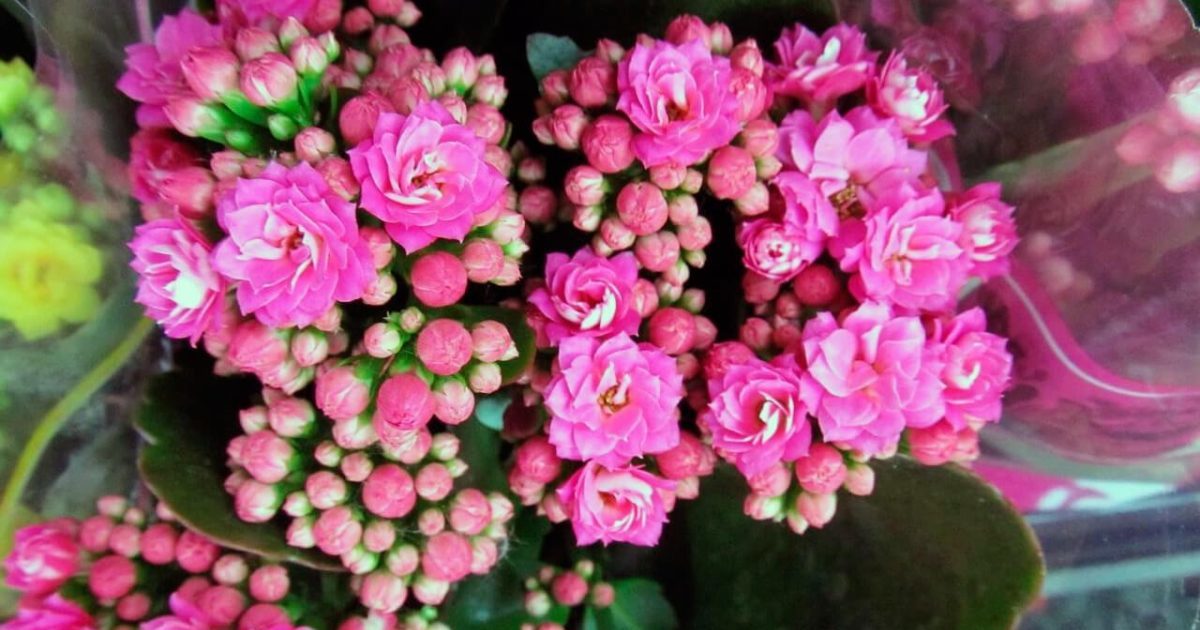 You may be interested in:
You may be interested in:Temperature mode
In the spring-summer period, the plant is kept at a temperature of + 20 ℃ to + 30 ℃. When the weather finally improves, it is useful to take the flower out into the fresh air. From this, he will gain strength and gain strength.
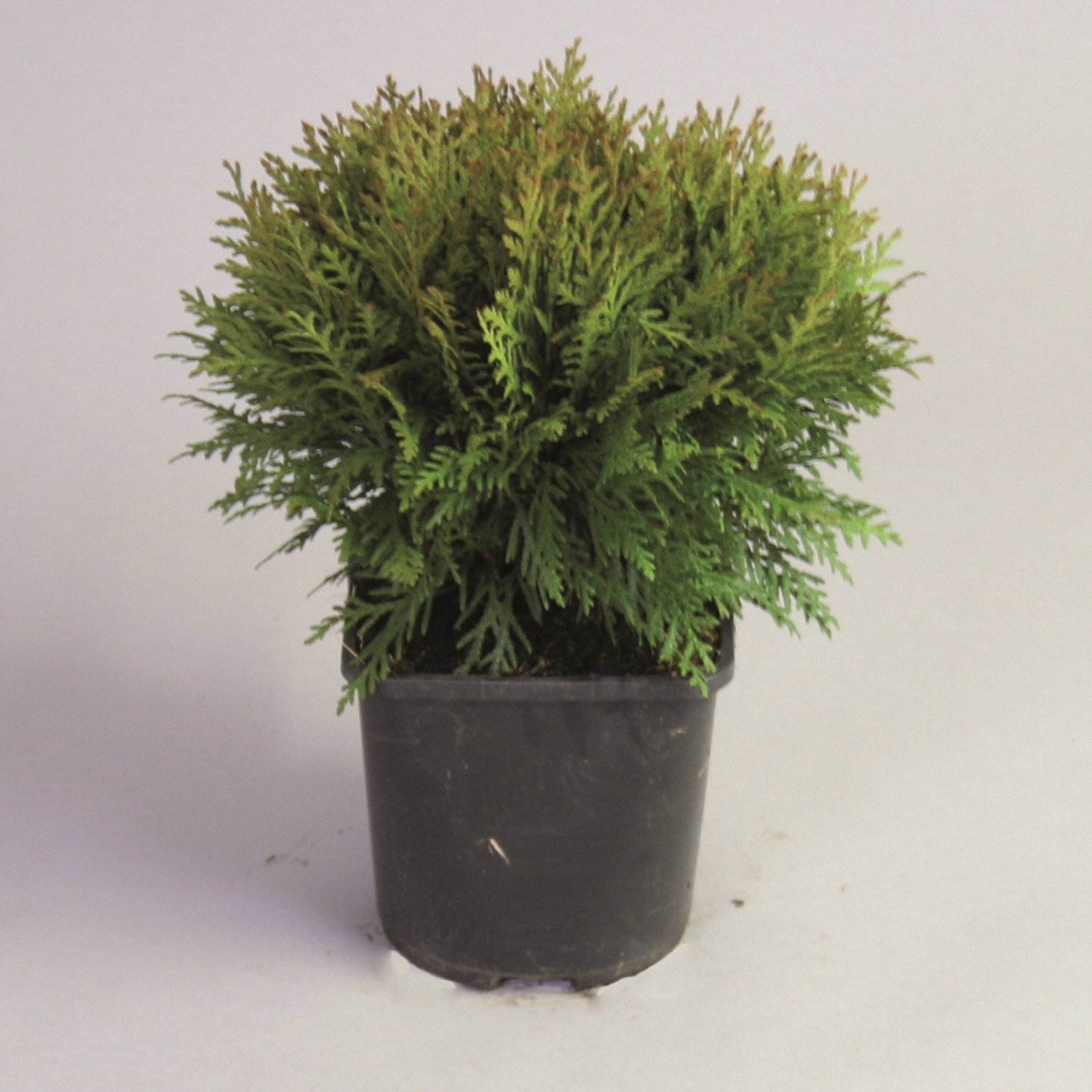
In August, the difference between the night and daytime temperatures becomes more noticeable, so at this time the pot is brought into the room. By winter, the temperature is reduced to + 15 ℃. The transition should be smooth so that the thuja does not feel discomfort. The plant is quite frost-resistant, but it is undesirable to subject it to low temperature tests.
Watering and humidity
The plant requires regular watering. It is impossible to allow the soil to dry out, because the thuja loses its decorative effect due to lack of moisture.
The flower develops absolutely normally in conditions of both high and low air humidity. Moreover, he calmly tolerates even the heat. But experts still recommend spraying thuja during the summer heat. The combination of dry air with high temperature can trigger the development of diseases or infection by pests.
Fertilizers and fertilizing
I don’t need to fertilize often. It is enough to feed once a month in spring and summer.
In spring, it is recommended to pay attention to fertilizers with a high nitrogen content. In summer it is advisable to replace them with potash and phosphorus. In the fall and winter, the thuja does not feel the need for additional feed, therefore it is canceled for this period.
As fertilizers, you can use special mineral complexes for decorative and deciduous plants. Thuja tolerates organics well, so it is permissible to alternate mineral and organic fertilizers.
Trimming and Shaping
Thuja trimming involves sanitizing the plant and forming a bush. Sanitary pruning is to remove dried parts of the plant. It can be carried out year-round.
Forming pruning is done every spring. It consists in giving the bush the desired shape. Dense growing needles provide truly limitless possibilities. You can cut the thaw with a neat bush or a mini-tree. You can give the plant a ball shape.
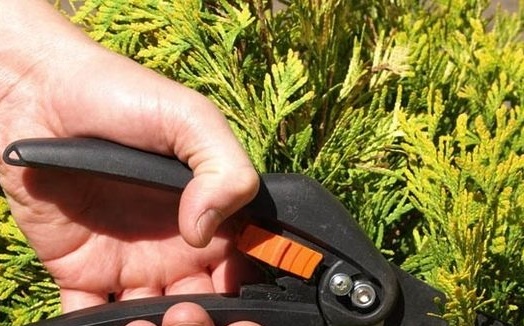
Experienced flower growers cut bushes in the shape of hearts, spirals and even chess pieces. Some types of plants are used in the art of bonsai.
Transfer
Young flowers need an annual transplant. Adult plants are transplanted as necessary, but the top layer of the substrate is changed annually.
The reasons for transplanting an adult thuja may be the following cases:
- The flower sprouts roots from the drainage holes of the pot.
- The upper ball of soil was covered with saline deposits.
- Moss appeared on the surface of the soil.
- The soil is very compacted and interferes with the normal development of the root system.
- The substrate is infected with infections or pests.
Thuja roots are very long and fragile. In order not to damage them, the transplant is carried out by the method of transshipment together with an earthen lump.
Breeding methods
Thuja is propagated by seed and cuttings. The first method is rarely used by gardeners for several reasons. Firstly, growing a flower from seeds is very troublesome. Secondly, the bush becomes full-fledged only in the 5th year of life. Thirdly, the seed does not retain the varietal characteristics of the mother plant.
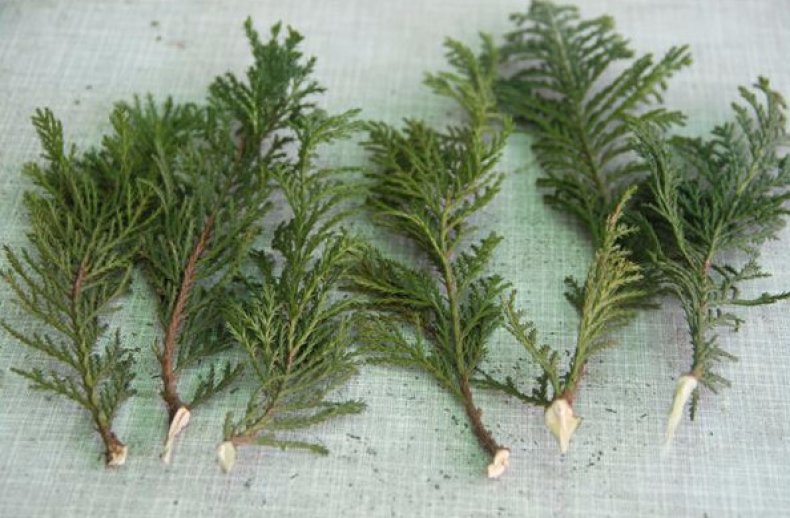
The faster and more effective is the method of cuttings. To do this, just cut off a twig from an adult plant and place it in moist soil for growing young thuja. Until the stalk is rooted, it is moistened by spraying. The rooted cuttings are transplanted next spring. Caring for a stalk is no different from standard care for a thuja.
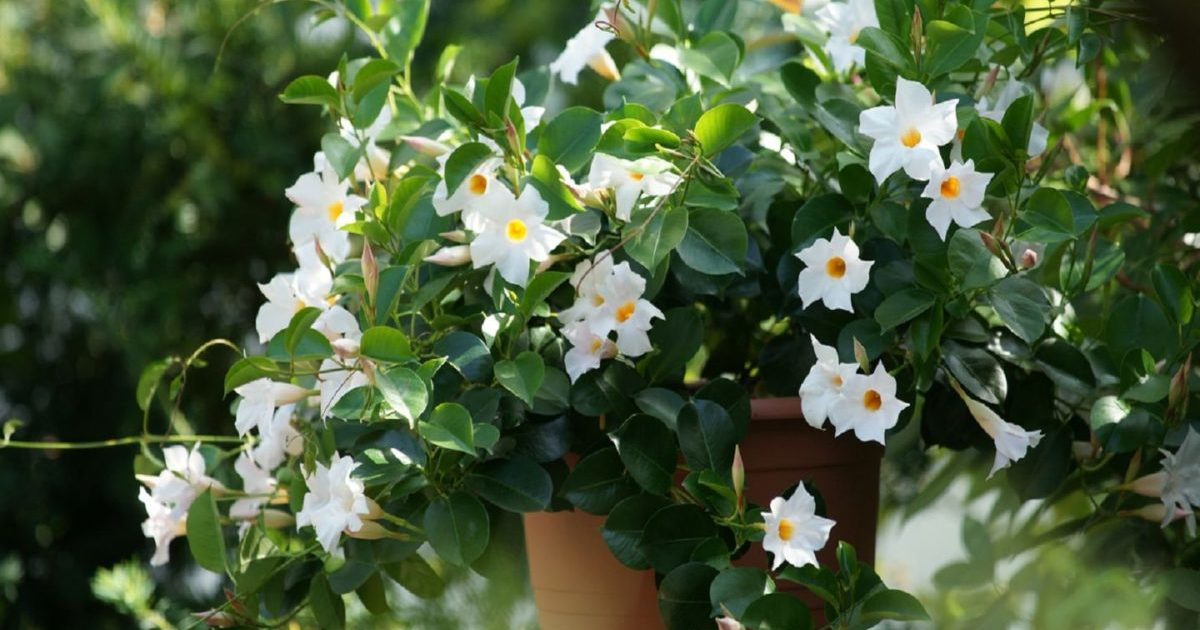 You may be interested in:
You may be interested in:What to do if indoor thuja dries up?
Often, flower growers encounter certain difficulties in growing an indoor flower. Most often, this is yellowing of the leaves or drying out of the thuja. If the thuja dried up, most likely mistakes were made in caring for the plant.
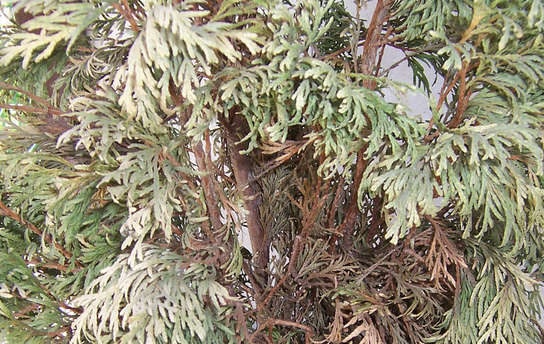
If the flower turns yellow and dries, it is necessary to determine the cause of the malaise and do everything to eliminate it. The most common mistakes of gardeners, due to which the plant turns yellow and dries, are the following points:
- Exposure to direct sunlight.
- Too deep or too protruding root neck.
If all of the above errors are excluded, this indicates a defeat of the flower by diseases or pests.
Disease
Often indoor thuja is affected by diseases such as cytosporosis and fusarium. These are infectious fungal diseases with which the plant can become infected in the fresh air or from other indoor crops. It is necessary to fight the fungus with the help of fungicides (Fitosporin, Oksikhom).
Cytosporosis affects the bark of the stems. Black spots appear on it, which over time turn into ulcers. The fungus spreads to the internal tissues of the wood, which leads to the death of the plant. The leaves of the flower affected by cytosporosis turn yellow, then acquire a brown hue, dry out.
Fusarium affects the root system, disrupting the metabolism of the plant. As a result, a nutrient deficiency occurs and the flower dies of exhaustion. You can determine the disease by the color and condition of the needles. In thuja affected by Fusarium, the leaves turn yellow, then acquire a reddish-red color, and then dry.
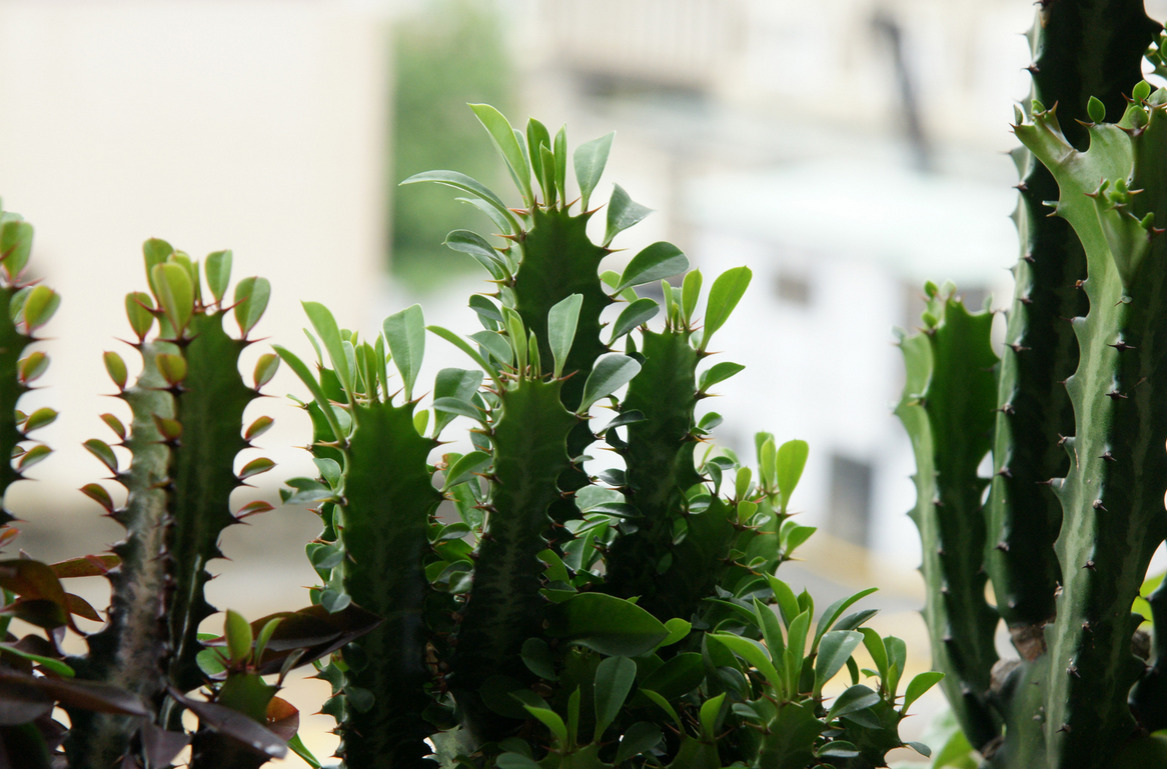 You may be interested in:
You may be interested in:Pests
Thuja can become a victim of the following pests:
- Aphid. It is possible to determine a slight infection with this pest by sticky coating on needles. But often aphids attack in whole colonies: harmful insects fill the entire surface of the branch. A closer look reveals a ton of beige moving dots.
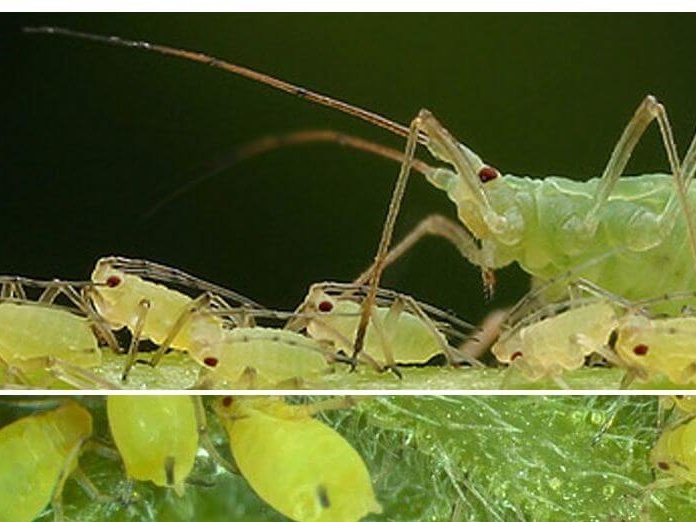
Aphid - Shield. It is difficult to notice this pest. Experienced flower growers determine it by dark wax spots on the needles.
- Bark beetle. The beetle makes small holes in the cortex, from which dust is strewed. Violation of the integrity of the wood is accompanied by drying of the needles.
Pest control involves the use of insecticides (Actara, Actellik).
How to reanimate a dried thuja?
If the thuja has completely dried up, you can try to revive it. To do this, follow these steps:
- Definition of live shoots.Dry needles - not an indicator, because it can be on live shoots. It is necessary to bend the branch slightly: if it is elastic, the shoot is alive and can be saved.
- Pruning. After all the living shoots are identified, the thuja is freed from dead wood. Note!It is very important to remove all dead sites, as they are infected.
- Drug treatment. In the case of thuja, many flower growers are advised to handle the remaining shoots with Epin. But you can use other biostimulants.
If the flower is young, it must be transplanted. Before landing, thuja is treated with Kornevin.
Common questions
Decorative thuja is unpretentious, so it’s easy to care for it. The plant exudes a very delicate aroma, reminiscent of the pleasant smell of spruce resin, which helps restore emotional and physical fatigue after a hard day, and effectively relieves stress.

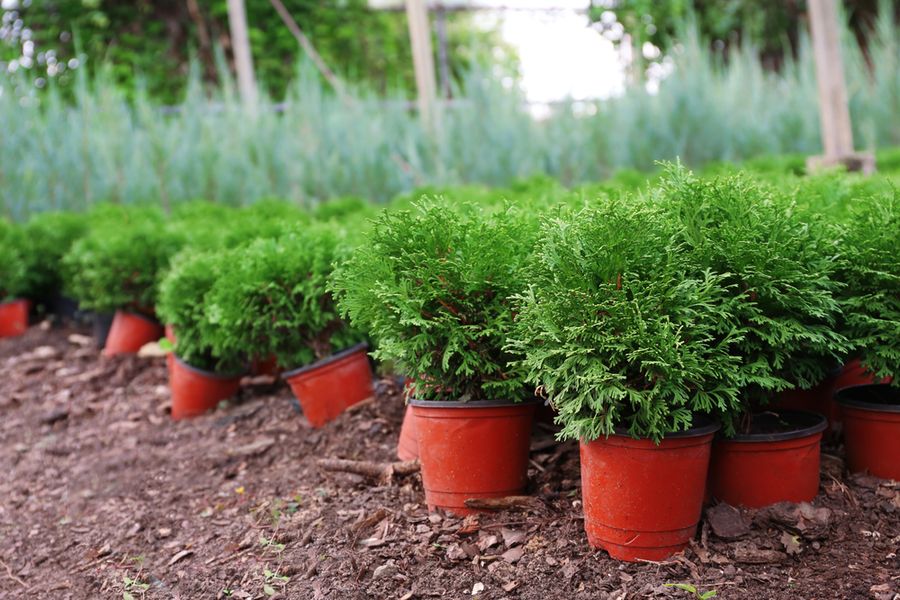
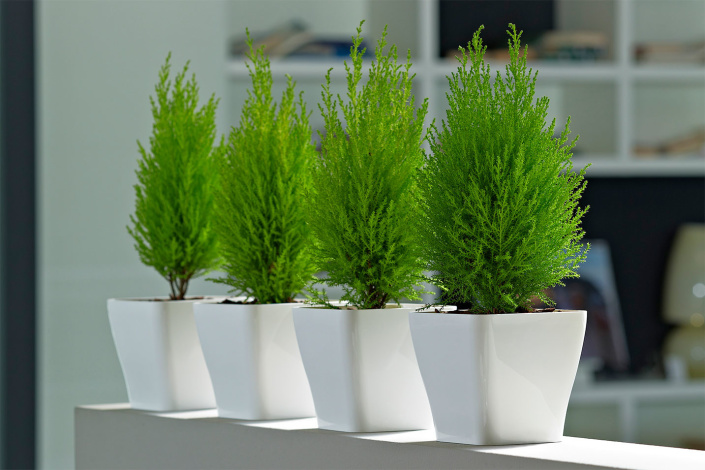
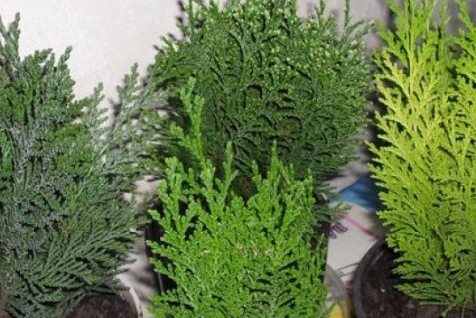



 Sow in the ground, without seedlings: 10 beautiful and unpretentious flowers
Sow in the ground, without seedlings: 10 beautiful and unpretentious flowers Platicodon planting and outdoor care
Platicodon planting and outdoor care Hosta - planting and care in the open ground in the Urals
Hosta - planting and care in the open ground in the Urals Oleander - care and growing at home
Oleander - care and growing at home